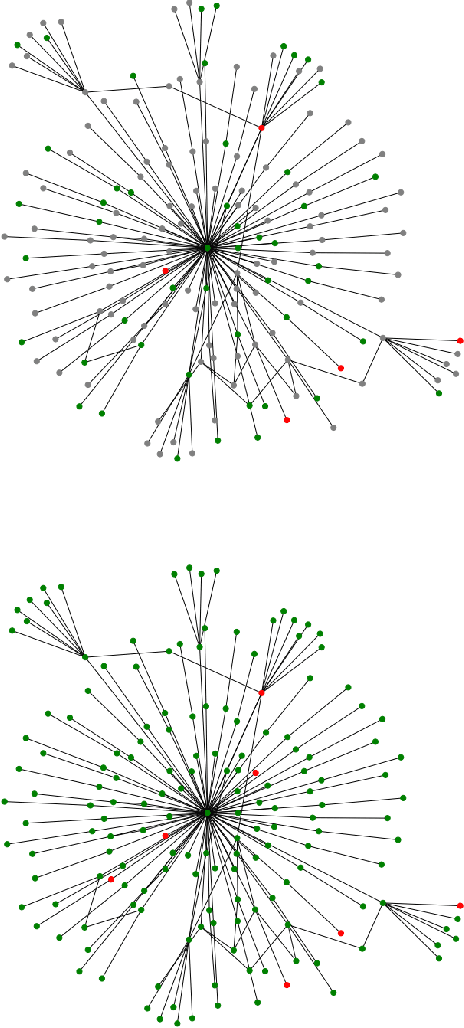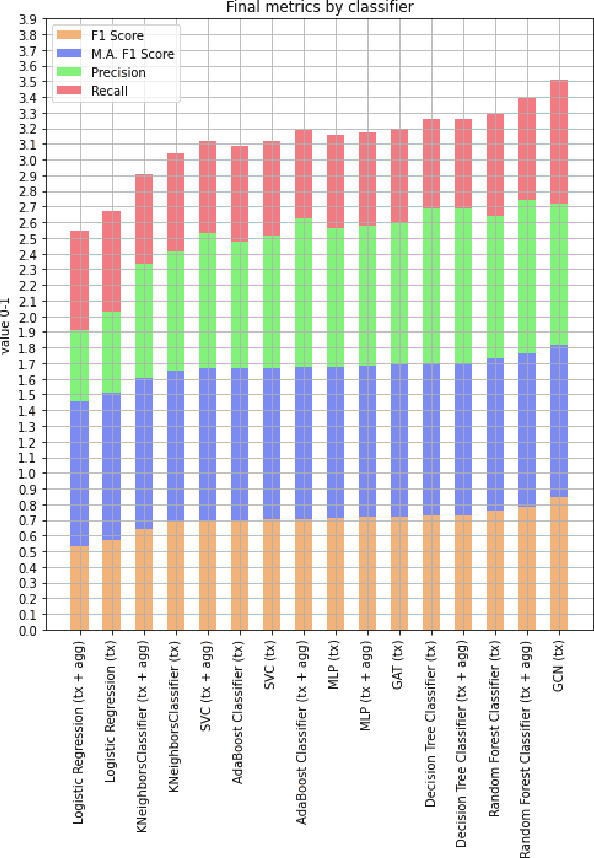Stefano Ferretti
Trust and Resilience in Federated Learning Through Smart Contracts Enabled Decentralized Systems
Jul 09, 2024Abstract:In this paper, we present a study of a Federated Learning (FL) system, based on the use of decentralized architectures to ensure trust and increase reliability. The system is based on the idea that the FL collaborators upload the (ciphered) model parameters on the Inter-Planetary File System (IPFS) and interact with a dedicated smart contract to track their behavior. Thank to this smart contract, the phases of parameter updates are managed efficiently, thereby strengthening data security. We have carried out an experimental study that exploits two different methods of weight aggregation, i.e., a classic averaging scheme and a federated proximal aggregation. The results confirm the feasibility of the proposal.
* TRUSTCHAIN workshop
Detecting Anomalous Cryptocurrency Transactions: an AML/CFT Application of Machine Learning-based Forensics
Jun 07, 2022



Abstract:The rise of blockchain and distributed ledger technologies (DLTs) in the financial sector has generated a socio-economic shift that triggered legal concerns and regulatory initiatives. While the anonymity of DLTs may safeguard the right to privacy, data protection and other civil liberties, lack of identification hinders accountability, investigation and enforcement. The resulting challenges extend to the rules to combat money laundering and the financing of terrorism and proliferation (AML/CFT). As law enforcement agencies and analytics companies have begun to successfully apply forensics to track currency across blockchain ecosystems, in this paper we focus on the increasing relevance of these techniques. In particular, we offer insights into the application to the Internet of Money (IoM) of machine learning, network and transaction graph analysis. After providing some background on the notion of anonymity in the IoM and on the interplay between AML/CFT and blockchain forensics, we focus on anomaly detection approaches leading to our experiments. Namely, we analyzed a real-world dataset of Bitcoin transactions represented as a directed graph network through various machine learning techniques. Our claim is that the AML/CFT domain could benefit from novel graph analysis methods in machine learning. Indeed, our findings show that the Graph Convolutional Networks (GCN) and Graph Attention Networks (GAT) neural network types represent a promising solution for AML/CFT compliance.
 Add to Chrome
Add to Chrome Add to Firefox
Add to Firefox Add to Edge
Add to Edge